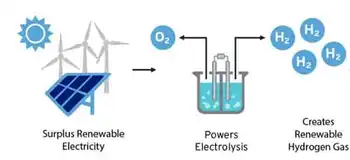New power plant is generating hope
By San Diego Union-Tribune
Electrical Testing & Commissioning of Power Systems
Our customized live online or in‑person group training can be delivered to your staff at your location.

- Live Online
- 12 hours Instructor-led
- Group Training Available
In many ways, the new plant is everything the old plant is not. It uses waste heat to increase its efficiency. It uses air for cooling, rather than drawing in millions of gallons of seawater — and killing fish.
And it's not in the middle of a community clamoring for its removal.
“This is something that's been planned for many years,” said Theresa Acerro, a Chula Vista activist who has fought against plants in her city.
Acerro said she doesn't know of any protests against the new plant, on Alta Road near a state, county and federal prison complex. “The only neighbors are the prisoners.”
San Diego Gas & Electric Co. has agreed to buy the full output of the Otay Mesa Energy Center for 10 years from its owner and developer, Houston-based Calpine Corp.
After 10 years, SDG&E has an option to buy the plant outright.
Calpine wouldn't say how much the plant cost, but in 2008, its cost was estimated at $380 million.
Construction was delayed because a supplier had trouble getting a boiler finished in time, said Calpine's Mitch Weinberg, who oversaw construction of the plant. The plant was initially planned to open in May.
The Otay Mesa location is ideal, Weinberg said.
SDG&E has a gas pipeline and a transmission line running nearby, and the remote location put it far from schools, homes or hospitals where people might have trouble with emissions.
Calpine also pioneered the way that it obtained pollution credits required under California law.
It outfitted Waste Management with a fleet of natural-gas-fueled garbage trucks and replaced the engines on tugboats and harbor cruise liners with more efficient models.
The 600-megawatt, natural-gas plant is expected to provide power for about 400,000 households and is designed to run all the time.
By contrast, the 700-megawatt South Bay plant has operated only during times of high demand providing peak power.
The operation of this plant prompted the California Independent System Operator, which runs the state's grid, to remove two of the four generating units at the South Bay plant — 53 percent of capacity — from “must run” status next year.
That means it's that much closer to decommissioning, said Michael Meacham, Chula Vista's director of conservation and environmental services.
“It's a huge step in the right direction,” Meacham said.
The grid operator is hoping that additional generation or transmission will allow the rest of the South Bay plant to go off the must-run list, said Stephanie McCorkle, an ISO spokeswoman.
“We support communities in their efforts to shut down older, less-efficient power plants, but our obligation is to keep the lights on,” McCorkle said.
Meanwhile, Calpine, which operates more than 25 gigawatts of power production around the country, is hoping this isn't its last plant locally, company Vice President Alex Makler said.
“We're constantly looking for sites in San Diego,” he said.











